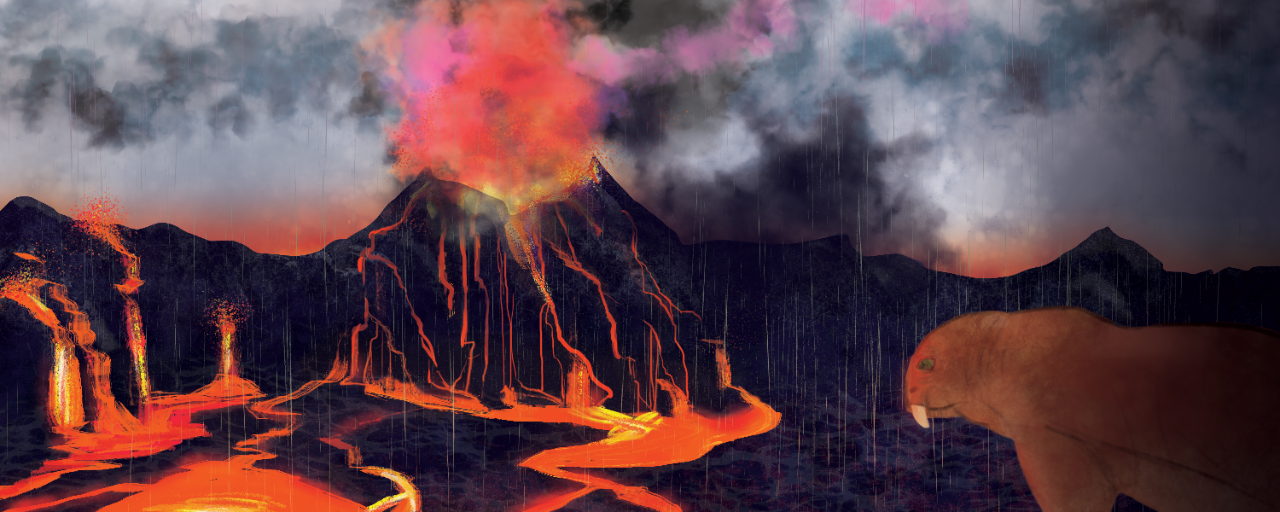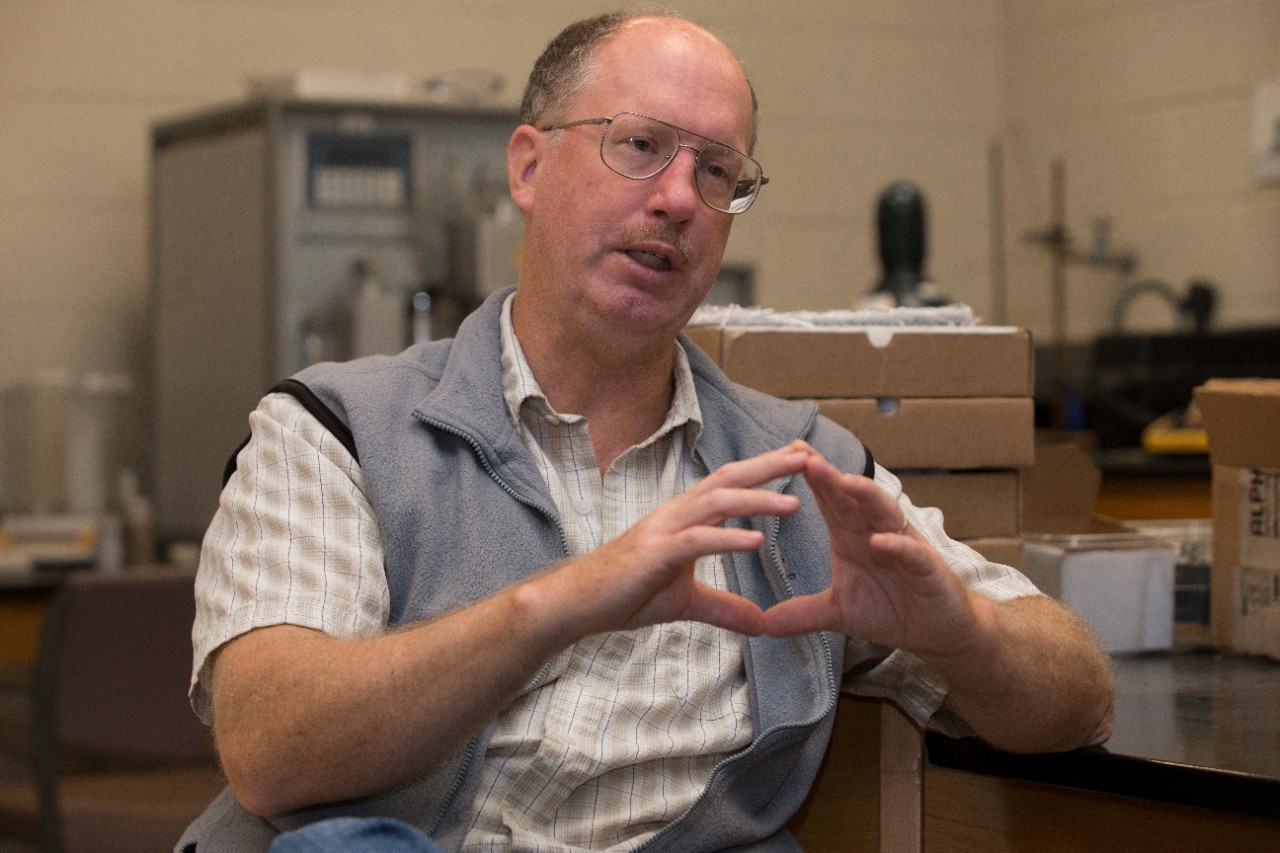
WLW: UC geologist explains risks of supervolcanoes
Geology professor Thomas Algeo talks to "Eddie & Rocky" about Yellowstone's caldera

UC geology professor Thomas Algeo has been studying the world's biggest mass extinctions. Photo/Joseph Fuqua II/UC Creative Services
The "Eddie and Rocky" show on 700-WLW talked to University of Cincinnati geologist Thomas Algeo about the supervolcano in the heart of Yellowstone National Park.
An op-ed about the volcano by author Bryan Walsh in The New York Times has generated a lot of social media discussion this month about the looming existential threat to human life on Earth.
Algeo has studied the world's biggest mass extinctions, including "the Great Dying" 252 million years ago that wiped out 95 percent of life on Earth. In a study published this year in the journal Nature Communications, Algeo found evidence that the extinction was caused by intense volcanic activity over hundreds of thousands of years.
Algeo said the historical eruptions at Yellowstone have been 1,000 times bigger than the 1980 eruption of Mount St. Helens in Washington that sent ash raining down hundreds of miles away.
"In the last 2 million years there have been three major eruptions of this volcano at intervals of 600,000 years. And the last major eruption was about 600,000 years ago," Algeo said. "In a geological sense, we're ready for another big eruption. But it doesn't happen like clockwork."
Algeo, a professor in UC's McMicken College of Arts and Sciences, said nobody knows for sure when Yellowstone's caldera might pose an imminent risk, but it will give us ample warning.
"There will be a lot of inflation of the magma chamber before it blows," he said. "If you ask me the probability of it happening tomorrow, it's effectively zero. But if you talk the next 100,000 years, it's almost a certainty."
Featured image at top: An illustration of life 252 million years ago when volcanic activity wiped out most life on Earth. Most of the big animals that pre-dated dinosaurs went extinct. Illustration/Margaret Weiner/UC Creative Services
Related Stories
How to keep birds from flying into your windows
July 3, 2024
UC College of Arts and Sciences professor Ron Canterbury tells the Indianapolis Star that simple steps can prevent birds from strike windows around your home or business. Yahoo! News shares the story.
Meet UC’s Miss Ohio
July 1, 2024
UC biomedical science student Stephanie Finoti credits UC for helping to prepare her for the Miss Ohio Scholarship Pageant. She will represent Ohio in the national competition in January.
UC alum credits journalism program with early success
June 26, 2024
Zachary Jarrell came to the University of Cincinnati in 2019 to pursue a degree in statistics. In 2023, he graduated with a Bachelor’s in Journalism. For many undergraduates, the journey through college rarely takes the expected track. Detours happen, and majors change. When plans switch up, it can be helpful to a student’s success to find support. For Jarrell, it was the people he worked alongside in the journalism department who helped him on his journey. It has left a lasting impression on his life so far, guiding him to multiple internships as an undergraduate, real-world experience in prominent news outlets, and eventually a successful career in the highly competitive field of journalism.
